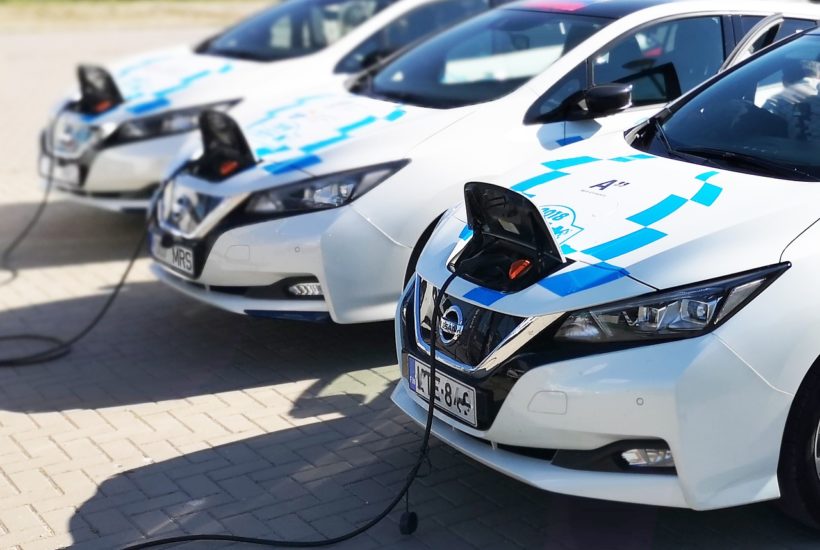Featured
Electric Vehicles Will Grow 40-fold by 2035 in Europe
Once electric vehicles penetration reaches 50% in an urban distribution network, uncontrolled charging could cause voltage deviations and affect the quality of the power supply. For this reason, the study explores several solutions: digitizing the grid to study customer behavior, installing smart chargers to manage capacity and prevent the grid from buckling, and integrating energy storage solutions.

Electrification continues to make progress in its conquest of mobility. By 2021, one in five vehicles registered in Europe will be electric. From the current figure of 3.3 million, these vehicles are expected to reach 65 million by 2030 and to double to 130 million vehicles by 2035. In other words, they will increase almost 40-fold in the next 14 years.
This is revealed by a study by Eurelectric and EY presented today, which clarifies that for this volume of electric vehicles it will be necessary to install 65 million chargers, of which 85% will be residential, 6% will be in the workplace, 5% at the destination (semi-public charging) and 4% in the corridors on public road corridors.
If you want to read more about the exponential growth of electric vehicles in Europe and to find other important economic news in the world, download for free our companion app Born2Invest.
European electric grid will be able to support the increase in electric vehicles
The report also assures that the electric grid will remain stable despite this exponential growth if the deployment of recharging infrastructure keeps pace with the growth of the market for these vehicles.
To achieve this, it is urgent to address existing bottlenecks, such as delays in obtaining permits and grid connection of up to 36 months, financing constraints, availability and access to real estate in strategic charging locations, and interoperability restrictions.
However, once EV penetration reaches 50% in an urban distribution network, uncontrolled charging could cause voltage deviations and affect the quality of the power supply. For this reason, the study explores several solutions: digitizing the grid to study customer behavior, installing smart chargers to manage capacity and prevent the grid from buckling, and integrating energy storage solutions.
Spain among the leaders
Currently, 66% of recharging points are concentrated in just five European countries, while 10 countries do not have a single recharging point for every 100 kilometers of road. In electric mobility, Germany, Italy, the United Kingdom, and the world leader, the Netherlands, stand out.
Looking ahead to the end of this decade, polarization will continue. EY points out that the UK, Germany, France, Italy, the Netherlands, and also Spain will account for around 60% of the total number of chargers. By 2035, Sweden, Poland, Portugal, and Denmark will join this list. The 10 countries will account for 70% of the Old Continent’s charger fleet.
__
(Featured image by bixusas via Pixabay)
DISCLAIMER: This article was written by a third party contributor and does not reflect the opinion of Born2Invest, its management, staff or its associates. Please review our disclaimer for more information.
This article may include forward-looking statements. These forward-looking statements generally are identified by the words “believe,” “project,” “estimate,” “become,” “plan,” “will,” and similar expressions. These forward-looking statements involve known and unknown risks as well as uncertainties, including those discussed in the following cautionary statements and elsewhere in this article and on this site. Although the Company may believe that its expectations are based on reasonable assumptions, the actual results that the Company may achieve may differ materially from any forward-looking statements, which reflect the opinions of the management of the Company only as of the date hereof. Additionally, please make sure to read these important disclosures.
First published in elEconomista.es, a third-party contributor translated and adapted the article from the original. In case of discrepancy, the original will prevail.
Although we made reasonable efforts to provide accurate translations, some parts may be incorrect. Born2Invest assumes no responsibility for errors, omissions or ambiguities in the translations provided on this website. Any person or entity relying on translated content does so at their own risk. Born2Invest is not responsible for losses caused by such reliance on the accuracy or reliability of translated information. If you wish to report an error or inaccuracy in the translation, we encourage you to contact us.

-

 Africa1 week ago
Africa1 week agoBLS Secures 500 Million Dirhams to Drive Morocco’s Next-Gen Logistics Expansion
-

 Fintech2 weeks ago
Fintech2 weeks agoRipple Targets Banking License to Boost RLUSD Stablecoin Amid U.S. Regulatory Shift
-

 Impact Investing3 days ago
Impact Investing3 days agoSustainable Investments Surge in Q2 2025 Amid Green and Tech Rebound
-

 Biotech1 week ago
Biotech1 week agoBiotech Booster: €196.4M Fund to Accelerate Dutch Innovation
























